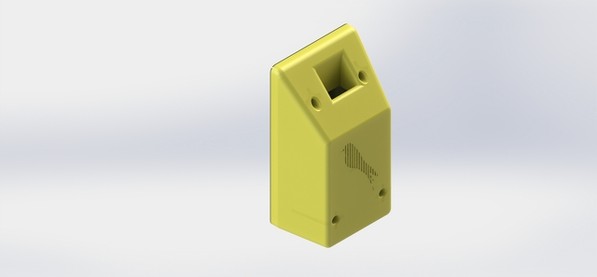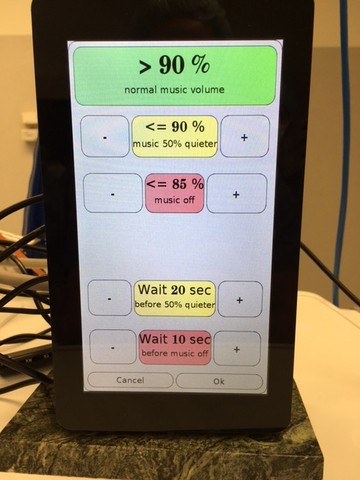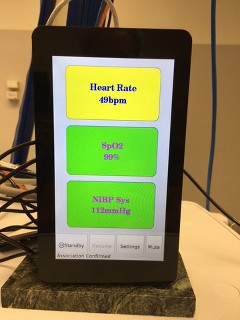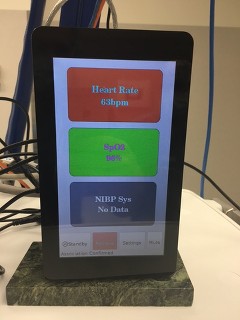About our project
The Problem We Solve
Most operating rooms play relaxing music during long surgical procedures but it can also be a dangerous distraction and can mask important tones from the anesthesia monitor. Operating rooms are already a highly noise-polluted environment with reverberating wall surfaces, warmers, suction, powered orthopedic equipment, clanging metal instruments and loud conversations (masks preclude lip-reading). It is well established that auditory issues in the OR can have an impact on outcomes (see further reading below.) Our goal was to develop a music system that would allow soothing music to calm the surgical team in their important work that would enhance, not diminish the attention of the alarms. The key problem to solve was to provide relaxing music without affecting the safety of the patient.
How We Solve it
Most operating rooms stream music using services like Pandora. Canarybox is an interface between the music player and the anesthesia monitor. If a patient’s vital signs (oxygen level, heart rate, or blood pressure) become abnormal, Canarybox mutes the music. The sudden quiet alerts the team to pay attention and allows them to easily hear any alarm tones, communicate more effectively and focus on the safety of the patient.
As a practicing anesthesiologist, I realize alarm management and reducing distractions in the OR are top priorities for hospitals and national safety organizations. Canarybox is a novel solution to both.
Our Origin Story
About two years ago I was in an operating room that was suddenly very noisy – it was the end of the case and everybody in the room was talking loudly. Scrub techs were noisily putting away trays of metal instruments and there was music playing on the room’s stereo. As I took the patient off the ventilator so she could begin breathing on her own, her oxygen level dropped from 98% to 78% – nobody in the room except me noticed or could even hear the low pitch of the oximeter or the alarm tone from the monitor. I had to raise my voice quite a lot to ask for the music to be turned off and for everybody to please be quiet. The patient did fine, but at that moment I wondered why the stereo couldn’t be interfaced with the anesthesia monitor so that the volume would automatically drop if a patient’s oxygen level declined. Turning off music in the room is an effective way to get people’s attention and is in itself an implicit call for silence.
How Canarybox Works:
The device sits between the anesthesia monitor and the stereo. It has digital and analog audio line in/line out jacks. The device will partially or fully mute music if a patient’s vital signs are mildly or markedly abnormal.
You can see our Canary Box Prototype depicted on the right in the image below

In production, the casing will look like this:

To minimize nuisance triggers, there are programmable delays.

In the pictures below the yellow zone = a 50% reduction in volume, the red zone is a full mute.


Clinical Proof to date
The device has received IRB approval at Saint Patrick Hospital in Missoula, Montana for a clinical trial to begin this month. Trials at Harborview (Seattle) and Vanderbilt medical center are pending as well.
FDA Status
A 513g request for classification is in process, and the device will either be a class I or class II. If class II (the anesthesia monitor is class II and this could be viewed as an accessory) then will need a 510k. Either will recommend medical grade EMC testing and compliance (60601-1 and 60601-1-2).
You can see more information on our first clinical trial here
How We Help Patients:
We help patients by making them more safe during surgery. We all may find ourselves in an operating room one day. Just as we now have cars that integrate stereo volume with seat belt use, our medical operating rooms should also have integrated intelligent music systems.
How We Help Surgeons and Surgical Teams:
Medical professionals suffer from alarm fatigue as monitors are programmed so conservatively that many alarms have no real clinical significance. Canarybox doesn’t add additional noise to the excess of noise in the medical work environment, it reduces it.
How We Help Hospitals, Institutions, and/ or Medical Facilities:
We look forward to providing solutions to Hospitals and other “High Reliability Organizations” (e.g. the nuclear industry) that want to design redundancy into their safety systems. Safe operating room and procedural music helps hospitals achieve the goal of being a HRO and moving toward zero harm. For an early adopter consultation and a custom solution design for your organization, please see the rewards at the right.
Our Market Opportunity
In the US there are over 50,000 operating rooms, plus additional procedure suites. Even though 50-75% of them play music, this new idea is a significant, easy to adopt improvement. Well-priced we expect to penetrate the US market. The idea of using the Internet of Things to improve patient safety is cutting edge, but slow to develop because things like infusion pumps have too much risk associated with them if they malfunction. Canarybox is low risk – it doesn’t replace any of the functions of the anesthesia monitor and doesn’t manage or broadcast alarms. It can’t hurt the patient, it can only make the room quieter when it needs to be, which is a great thing.
What Comes Next
Project goals: Canarybox is already fully functional and interfaces with monitors from Philips, Spacelabs, and Datex-Ohmeda. The first Institutional Review Board (IRB) approved clinical study is beginning this month. In order for Canarybox to make a difference in patient care it needs to navigate the FDA process so people can begin using it. Unfortunately, the fees for a 513g, 510k, 60601-1-2 (and risk management analysis) are quite hefty (tens of thousands). All of the proceeds would be spent on meeting the requirements of the regulatory pathway.
Who Are We
Company: Canary Sound Design, find us online here
Founder: Alistair MacDonald
CTO / Engineering Team: Cedar Mountain Software.
The mission of Canary Sound Design is to bring an intelligent patient-centric music system to a complex high-risk work environment. As a sound system that ‘listens’ to patient vital signs, Canarybox uses advanced algorithms to silence music during critical events that demand a quiet environment. Canarybox is designed to be an asset to hospitals, physicians and patients.
Thank you for your support.
Sincerely Yours,
Alistair MacDonald, MD
Canary Sound Design, LLC
Further Reading
Noise in the Operating Room. Katz, J. Anesthesiology 2014; 121:894-8.
Intraoperative Noise Increases Perceived Task Load and Fatigue in Anesthesiology Residents – A Simulation-Based Study. McNeer et al. Anesth Analg 2016 Feb; 122(2):512-25.
Effect of Noise on Auditory Processing in the Operating Room. Way et al. J Am Coll Surg 2013 May; 216(5) 933-38.
Music in the Operating Room: Is it a Safety Hazard? Shambo et al. AANA 2015 Feb; 83(1) 43-8.
Effects of divided attention and operating room noise on perception of pulse oximeter pitch changes: a laboratory study. Stevenson et al. Anesthesiology 2013 Feb; 118(2):376-81.
-
Have a question?
If the info above does not help, you can ask the project creator directly.
-
-








